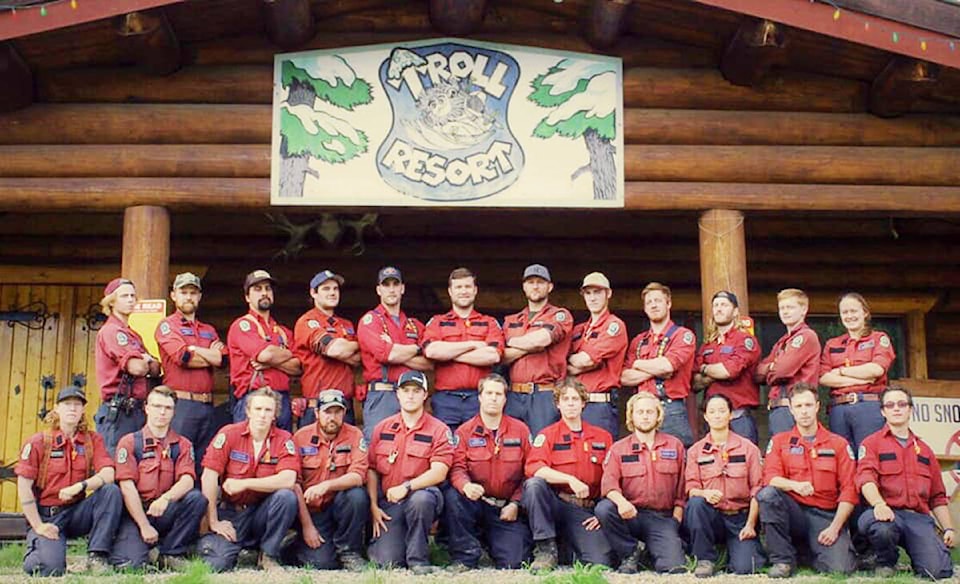The wildfire newsletter released late last month by the Cariboo Fire Centre paints a very different picture from last summer.
Due to precipitation and below-seasonal temperatures, the Cariboo Fire Centre is experiencing little fire activity at this time.
There is one active wildfire within the Cariboo Fire Centre near Marks Lake and it is under control, according to the newsletter, which came out Aug. 20. This has not changed.
“While there are other possible variables that may have contributed to the low fire activity experienced in the Cariboo this season, cooler temperatures and precipitation levels are largely contributing factors,” the Cariboo Fire Information Team stated in a follow-up email.
According to the newsletter from the Cariboo Fire Centre, there have been 48 fires to date in the Cariboo Fire Centre since April 1. The Cariboo Fire Centre stretches from Loon Lake near Clinton in the south to the Cottonwood River in the north and from Tweedsmuir Provincial Park in the west to Wells Gray Provincial Park in the east.
Thirty fires have been human-caused, while 18 were caused by lightning. Since April 1, 191 hectares have burned. This compares to 302 fires by Aug. 20, 2018, and 39, 339 hectares burned by this time last year in the Cariboo Fire Centre.
Provincially, since April 1, there have been 676 wildfires to date in 2019, which have burned 21,309 hectares. Three hundred and seventy-six fires have been human-caused and 296 have been caused by lightning.
The Cariboo Fire Centre employs 27 permanent staff and a large number of seasonal support staff, including dispatchers and about 130 highly-trained seasonal firefighters. There are 13 Initial Attack Crews stationed throughout the Cariboo Fire Centre, and these rapid-response crews are based in Williams Lake and deployed to communities to be available for immediate dispatch to a wildfire. Each crew is a highly-trained, self-contained team of three people, and they are often the first to respond to a fire call and are responsible for containing fires at the smallest possible size.
Unit Crews are 20-person teams that provide sustained fire suppression capability for fires that grow to significant size, and there are four Unit Crews stationed in the Cariboo Fire Centre, including the Blackwater Unit Crew here in Quesnel.
This year, 143 firefighters and 11 additional B.C. Wildfire Service staff from the Cariboo Fire Centre were deployed at various times to Alberta, the Yukon and Ontario to assist with their wildfire situations, according to the newsletter. The Blackwater Unit Crew was deployed to Alberta on one occasion this year. Personnel can be deployed out of province for a maximum of 19 consecutive days, but they can be recalled at any time, according to the Fire Information Team.
In the Cariboo, crews have been engaged in various fuel mitigation projects, such as prescribed burning and pile burning.
“Fuel mitigation projects help achieve land management and fuel management objectives by reducing the buildup of forest fuels,” says the Cariboo Fire Information Team. “As seen during the 2017 wildfire season, mega-fires can result in tremendous social, ecological and economic impacts. To help reduce wildfire severity and related threats to communities, the B.C. Wildfire Service, along with land managers, undertake fuel management activities, including the use of prescribed fire.”
Prescribed burns are being planned and implemented throughout the Cariboo Fire Centre, including in the Quesnel zone. “A prescribed fire is an intentionally-ignited fire that is planned and managed by a certified ‘Burn Boss,’” says the Fire Information Team. “The Burn Boss is responsible for ensuring that the initial burn conditions are favourable and that the fire is extinguished once the prescribed burn is completed.”
Prescribed fire is often used to help protect communities and infrastructure in the wildland-urban interface, where developed areas border on forests or grasslands, according to the newsletter.
“The removal of forest fuels helps slow the spread of wildfires and provides firefighters with a safer work environment during any future wildfire operations,” it states. “These burns also help prevent tree encroachment, rejuvenate understory plants and help maintain more open grasslands and forests with large trees. The reintroduction of managed, low-intensity ground fires to grasslands is intended to restore and maintain traditional grassland plant communities that are native to these areas.”
To help prevent human-caused wildfires, Category 2 open burning continues to be prohibited throughout the Cariboo Fire Centre. This means one to two concurrently burning piles no larger than two metres high by three metres wide, as well as stubble or grass burning over an area less than 0.2 hectares, is not permitted.
As well, the burning of any waste, slash or other materials; open fires larger than 0.5 metres wide by 0.5 metres high; stubble or grass fires of any size over any area; the use of sky lanterns; the use of fireworks and firecrackers; the use of tiki torches and similar kinds of touches; the use of binary exploding targets; the use of burn barrels or burn cages of any size or description; and the use of air curtain burners are also prohibited.
Campfires that are a half-metre high by a half-metre wide or smaller are allowed, as are cooking stoves hat use gas, propane or briquettes.
Larger Category 3 open fires are also prohibited.
READ MORE: Category 2 open fire ban goes into effect for Cariboo Fire Centre July 29
editor@quesnelobserver.com
Like us on Facebook and follow us on Twitter
